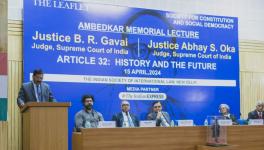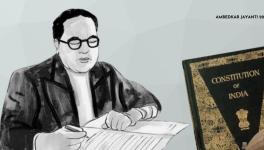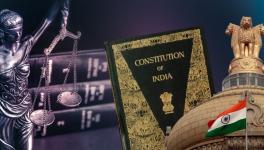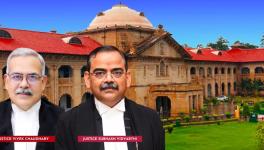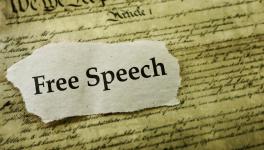Twitter’s petition provides an opportunity of much-needed independent judicial scrutiny in a long-standing battle between the State and social media platforms, and potentially shape the policy discourse on platform regulation for the future.
———-
On July 5, Twitter filed a petition before the Karnataka High Court, challenging certain blocking orders issued by the Union Government under Section 69A of the Information Technology Act (‘IT Act’) for being arbitrary, disproportionate and procedurally deficient. It further averred that the orders do not provide reasons for the directions passed. It contends that since the content challenged in the petition falls within the ambit of freedom of speech as guaranteed under Article 19(1)(a) of the Constitution, the blocking orders would violate the right of free speech as several of the URLs contain political and journalistic content.
Twitter’s vantage point can be understood from the policy statement on its website, which states, “Twitter is a social broadcast network… that brings a variety of people with different voices, ideas, and perspectives. People are allowed to post content, including potentially inflammatory content, as long as they’re not violating Twitter Rules… Twitter does not screen content or remove potentially offensive content.”
The present instance is a culmination of an enduring tussle between Twitter and the government. In the past, there have been several instances of Twitter locking horns with the government. However, there are also issues with Twitter’s own transparency mechanisms in content moderation, and the company has itself been inconsistent in blocking content on its own. For instance, in 2019, senior advocate Sanjay Hegde’s account was suspended by Twitter for “depiction of hateful imagery”, only to be restored and subsequently blocked again for sharing a poem titled “Hang Him”, which, Hegde argued, was a retweet dating back to 2017.
Tech giants wield great power in influencing political, social and economic dynamics of a country. They achieve this by two diametrically opposed ways: by serving the State in its strategic and political goals, and by enabling citizens to challenge the State.
Again, in March this year, the Delhi High Court questioned Twitter on why it wouldn’t block users who repeatedly post blasphemous content about Hindu gods and goddesses, and commented that the platform was not bothered about the religious sentiments of other people around the world and acted only when it itself felt sensitive about such content. On Twitter’s submission that it cannot block an account on its own or without a government order, the court called out on its self-contradictory stance by citing former U.S. President D.J. Trump’s permanent suspension from the platform. This points to inconsistent implementation of policy practices by the platform across jurisdictions.
Also read: Decoding Twitter versus Indian Government Imbroglio
Dynamics of the tussle
The battle between Big Tech and the State has been raging across jurisdictions. This is because tech giants wield great power in influencing political, social and economic dynamics of a country. They achieve this by two diametrically opposed ways: by serving the State in its strategic and political goals, and by enabling citizens to challenge the State.
In February 2021, Twitter, in its response to blocking orders from the Union Government, had stated, “In keeping with our principles of defending protected speech and freedom of expression, we have not taken any action on accounts that consist of news media entities, journalists, activists, and politicians. To do so, we believe, would violate their fundamental right to free expression under Indian law. We informed [the Union Ministry of Electronics and Information Technology] of our enforcement actions.”
However, Twitter does not seem to have been able to uphold this policy lately. For instance, June saw the greatest number of take-down notices for 2022, which included accounts of journalists and politicians. Notably, Twitter is always under threat of losing its safe harbour protection under Section 79 of the IT Act for non-compliance with blocking orders of the government. Twitter, in its petition before the Karnataka High Court, states that it complied with several blocking orders under protest.
This tussle is a result of the opposing interests of the State and social media platforms. The motivation for such a challenge against the State is not so much a genuine concern for an individual’s right to free speech as the ideological framework provided by the right to free speech, which supports the interests of these companies that want to grow their base of users who can continue to engage on the platform (thus creating more content), enjoy intermediary immunity and control user data (which contributes to revenue).
Conversely, the State’s interest lies in being able to control information, which informs a part of its regulatory efforts. By controlling Big Tech, it indirectly exerts control on its citizens, such as “by determining the sources and nature of information, and also the timing and volume of delivery”. For instance, Twitter was recently ordered to block tweets from an American non-profit organisation Freedom House that noted a decline in press freedom in India.
The motivation for such a challenge against the State is not so much a genuine concern for an individual’s right to free speech as the ideological framework provided by the right to free speech, which supports the interests of these companies that want to grow their base of users who can continue to engage on the platform (thus creating more content), enjoy intermediary immunity and control user data (which contributes to revenue).
The ideological framework used here is the idea of accountability, as can be gauged from several of the comments from within the Union Ministry of Electronics and Information Technology, including the latest comment from the Minister of State for Electronics and Information Technology, Rajeev Chandrashekhar, stating, “In India, all including foreign Internet intermediaries/platforms have right to court and judicial review. But equally ALL intermediary/platforms operating here, have unambiguous obligation to comply with our laws and rules.”
Also read: Does Twitter have the power to remove content and block a user merely on complaints?
Section 69A, mandated confidentiality, and its pitfalls
However, as lawyer Vrinda Bhandari points out, Twitter is “uniquely positioned” to challenge the government. This is because of the requirement of confidentiality of blocking orders under Rule 16 of the Information Technology (Procedure and Safeguards for Blocking for Access of Information by Public) Rules, 2009 (‘Blocking Rules’). The process of issuing blocking orders under the Blocking Rules is executive-driven and confidential.
This lack of transparency poses hurdles for users and content creators in ascertaining the legitimacy of government action, and be able to challenge the same. Requests under the Right to Information Act, 2005 (‘RTI Act’) to obtain such information on the blocked content have also been denied. As a result, the Lumen database of the Berkman Klein Center for Internet & Society at Harvard University that hosts “takedown notices along with other legal removal requests and demands concerning online content” remains the main source of obtaining any data about blocked content on Twitter.
However, in order to provide an effective writ remedy to the aggrieved individual, there is a need for disclosure, failing which, creators face challenges when their content is blocked, and have to go through a time-consuming, expensive and arduous legal process to secure a copy of the blocking order and challenge it before a court. Since social media companies are the only entities to have access to blocking orders (although mandated with a strict confidentiality requirement), such access allows them to understand and identify patterns in the content flagged by the government and its decision-making process.
The blocking orders are passed under section 69A of the IT Act. In Shreya Singhal versus Union of India (2015), the Supreme Court upheld the constitutionality of section 69A on the basis that it incorporated the same grounds of restriction as those under Article 19(2) of the Constitution, and has sufficient procedural safeguards, including the constitution of a review committee and the requirement of recording of reasons for the blocking order, which makes it amenable to judicial review. In practice, however, these safeguards are hardly followed.
Ascertaining whether a blocking order was passed in accordance with the procedural safeguards would require that the order be at least made available to the originator of the content. In an unprecedented ruling, the Delhi High Court, in March, ordered that post-decisional hearing along with the blocking order be provided to journalist and film critic Tanul Thakur, whose website was blocked without providing him with any notice or opportunity of hearing. The Centre had refused him a copy of the blocking order under the RTI Act, citing confidentiality requirements under the Blocking Rules. The confidentiality clause and the government’s unwillingness to disclose reasons, data, or the orders themselves results in case-by-case determinations by courts, even as several aggrieved remain remediless.
The Supreme Court’s interpretation of section 69A ignored that Article 19 does not envisage the executive being delegated with what are supposed to be the Parliament’s law-making powers for restricting free speech, which is precisely what section 69A results in, making it constitutionally dubious. The grounds of restrictions provided under Article 19(2) and incorporated under section 69A are contextual in applicability and therefore debatable.
Article 19 does not envisage the executive being delegated with what are supposed to be the Parliament’s law-making powers for restricting free speech, which is precisely what section 69A results in, making it constitutionally dubious.
This is why a parliamentary process for imposing such restrictions is envisaged and an opaque executive process imposing such restrictions becomes questionable as it effectively grants “a government servant the power to determine the extent of an individual’s freedom of speech”. It is this dubious consequence of section 69A that forms the underlying basis of Twitter’s challenge before the Karnataka High Court.
Also read: Twitter Withholds Prolific Accounts in an Oppressive Commentary on the Freedom of Speech in India
Regulating social media and protecting free speech
Most recently, the proposed amendments to the Information Technology (Intermediary Guidelines and Digital Media Ethics Code) Rules, 2021 provide for the constitution of the Grievance Appellate Commission (‘GAC’), which, as I explained previously, has been criticised for being a deficient solution. While the proposed GAC attempts to provide for an appellate mechanism against the decision of the grievance officer of the intermediary, there is effectively no redressal available to users against blocking orders passed by the State, despite presence of supposed safeguards within the law.
Stuck in the tussle between the State and the platforms are the users whose rights both sides claim to protect, while assailing the other. The absence of accountability on either side, inconsistent enforcement of free speech ideals by the platform, and an arbitrary and opaque restriction on free speech by the State ultimately costs the individual of her right, with no adequate remedy for redressal.
Twitter’s petition provides an opportunity of much-needed independent judicial scrutiny in a long-standing battle between the State and social media platforms, and potentially shape the policy discourse on platform regulation for the future.










